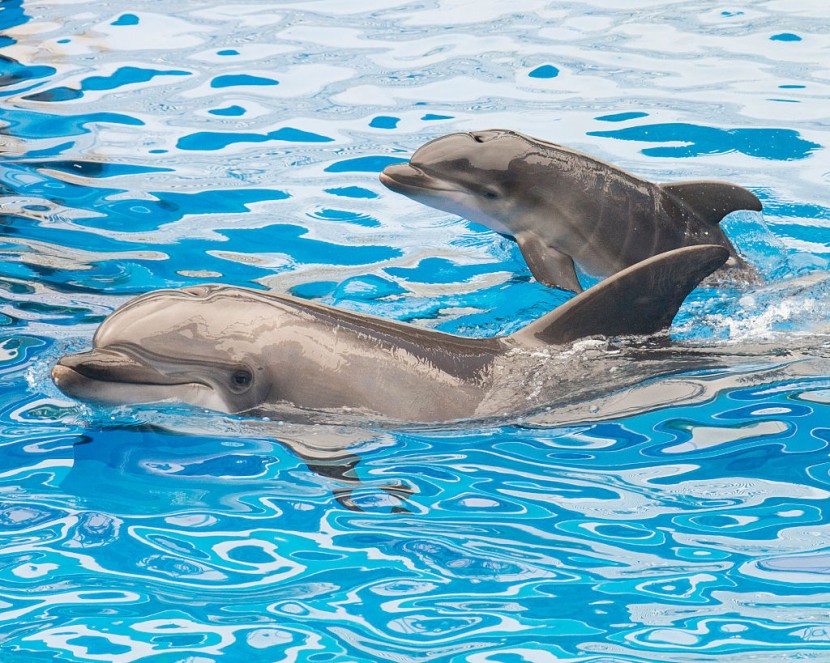
This month, marine mammal rescue organizations along the Southern California coast have been inundated with reports of ill and deceased sea lions and dolphins, and experts believe a bloom of harmful algae is to blame.
According to a statement by the National Oceanic and Atmospheric Administration's National Marine Fisheries Service, or NOAA Fisheries, hundreds of sea lions are believed to have perished in the first weeks of June.
Toxic Algae Killed Dolphins, Sea Lions in California
According to Michelle Berman Kowalewski, founder and director of the Channel Islands Cetacean Research Institute in Santa Barbara, the number of deceased dolphins has reached approximately 100.
NOAA Fisheries has collected tissue samples for testing to corroborate that the animals are victims of domoic acid, a neurotoxin generated by the algae Pseudo-nitzschia. The contaminant enters the food chain and causes marine mammals to become ill when they consume prey, according to The Independent.
The California Department of Public Health said individuals who consume crustaceans, fish, and shellfish that have accumulated elevated levels of domoic acid are also at risk. It is potentially lethal in large concentrations.
The algae is naturally occurring, and incidents of domoic acid poisoning are not uncommon along the California coast, but the severity of the current outbreak is exceptional.
In her 25 years of experience, Berman Kowalewski stated that the number of deceased dolphins is "certainly the highest number of animals associated with a domoic acid event."
The symptoms of disorientation and agitation in beached sea lions include head swaying, frothing at the mouth, seizures, and loss of motor skills. Beachgoers are advised to avoid distressed animals and instead contact rescue organizations.
The Channel Islands Marine & Wildlife Institute received over one thousand reports between June 8 and June 14, according to co-founder and managing director Ruth Dover.
NOAA Fisheries reported that ocean monitoring agencies discovered elevated concentrations of domoic acid from Orange County to San Luis Obispo County, but particularly in the Santa Barbara Channel off Santa Barbara and Ventura counties.
Berman Kowalewski stated that nutrients flushed into the ocean by rain and breezes that produce an eddy effect in the channel and cause upwelling are significant contributors to algae growth.
Over 200 Distressed Marine Mammals were Reported
Every day, rescue organizations receive over 200 reports of marine mammals in distress. Particularly seabirds, dolphins, and sea lions are becoming ailing due to the rapid growth of certain species of phytoplankton that produce a toxin known as domoic acid.
NOAA reports that Santa Barbara and Ventura counties in Southern California have been struck particularly heavily. The Channel Islands Marine & Wildlife Institute, which aids in animal rescue and treatment, reported receiving more than 200 daily reports of marine mammals in distress. Per BBC, the blossoms can also be hazardous to humans.
The California Department of Public Health monitors these levels and closes shellfish beaches if necessary, Dr. Caron said. However, consuming fish containing high levels of the pollutants can make people ill.
Humans may also attempt to approach larger beached mammals such as sea lions and dolphins, but the animals may become aggressive due to the presence of toxins. Dr. Caron advised avoiding the marine life and calling rescue organizations, which have been able to save some animals by capturing, feeding, and giving them liquids until the toxins are flushed from their systems.
In California, algae typically swells between March and June, but due to a wet winter, the blooms may climax later than usual this year. According to experts, not all species of phytoplankton produce toxic pollutants, but those that do may be expanding into new regions as a result of climate change.
This is because, as water temperatures rise, more areas become suitable for the formation of harmful algal blooms, which are more likely to occur in warmer water. Dr. Caron stated that scientists are still investigating the impacts of climate change on organisms inhabiting coastal waters.
Related Article : VIDEO: 4 Dead After Blaze at New York E-Bike Shop Spreads Apartments
© 2025 HNGN, All rights reserved. Do not reproduce without permission.








